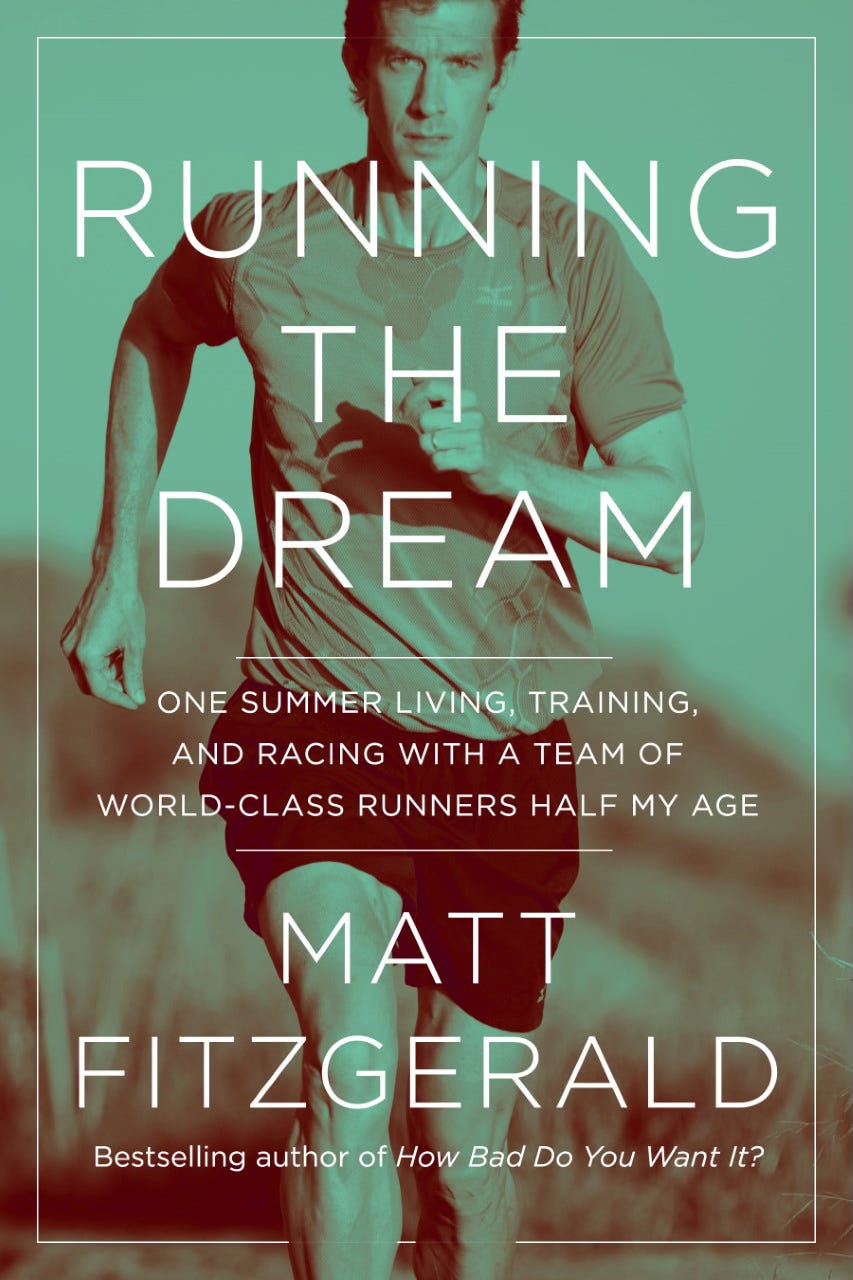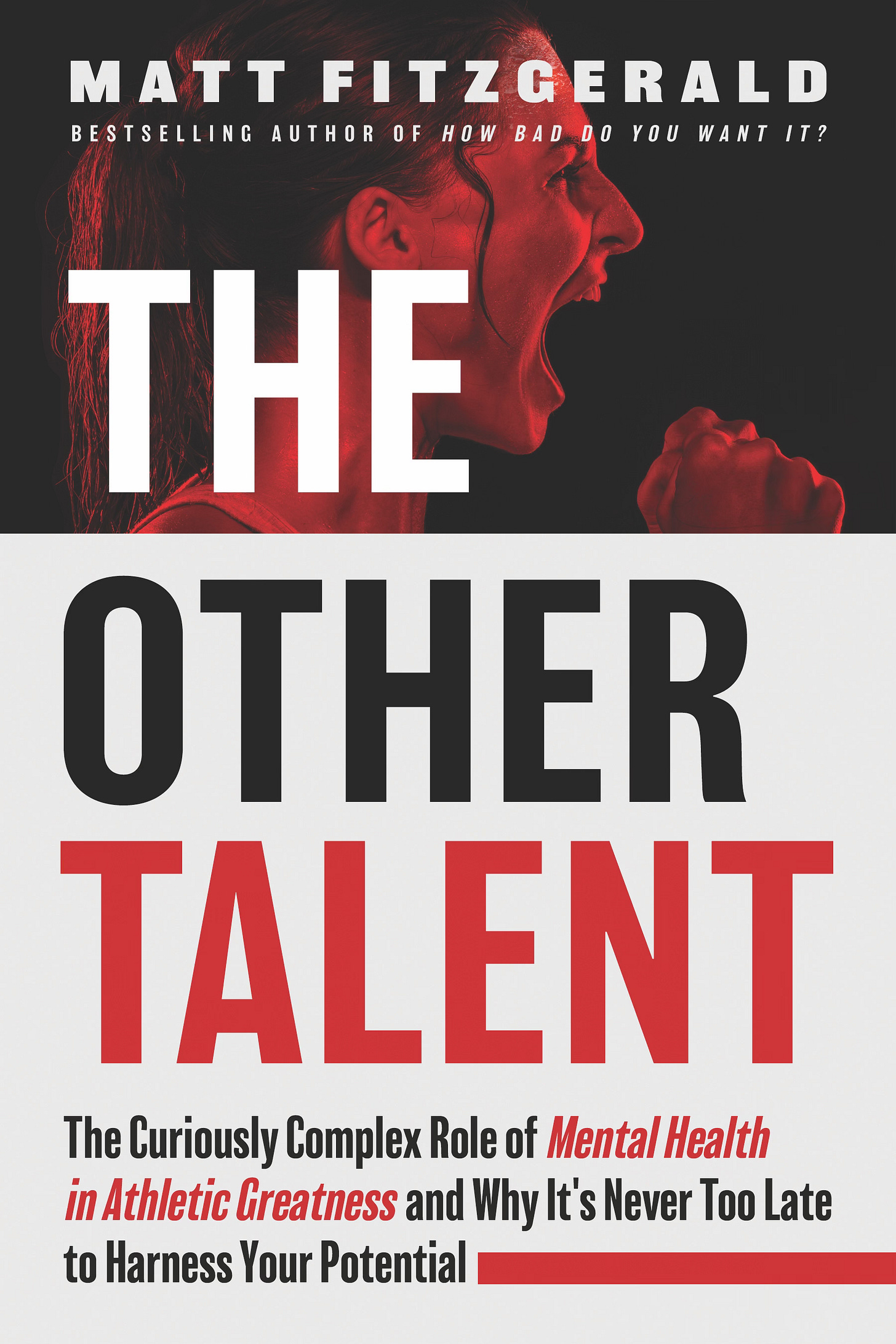Why I Like to Fail Publicly
For athletes who don’t fear failure, higher stakes equal better performance. So why not raise the stakes?
In 2017 I trained with Flagstaff-based HOKA Northern Arizona Elite for thirteen weeks, a dream-come-true that I refer to in nostalgic hindsight as my “fake pro runner” experience. Despite being twice as old and half as fast as the real pros, NAZ Elite founder and coach Ben Rosario allowed me to tag along with his group of Olympic aspirants because my plan was to document the experience in a blog, a video documentary, and a book—a trifecta of good publicity for his then three-year-old enterprise.
A little over halfway through my journey toward the Chicago Marathon—where I was scheduled to compete in the men’s elite division thanks to some backroom maneuvering by sports agent Josh Cox—I suffered a second-degree tendon strain during an epic workout on Lake Mary Road. Forced to shut down my training (Coach Ben wouldn’t even let me ride the ElliptiGO for three days), I watched helplessly as my dream turned into a nightmare.
On the second of those three days of enforced sedentariness I received an email message from a self-described fan of my writing who wanted me to know that he and some of his training buddies had placed bets on how long I would survive with NAZ Elite before I got injured, and that he had won the wager, having chosen the exact date of my groin injury. His delight in my downfall was obvious, despite cursory efforts to sandwich his gloating between hollow expressions of sympathy.
You’re probably thinking, What an asshole, and I must admit I had the same thought initially. But I didn’t dwell on the insult because I knew I was putting myself at risk of becoming the object of meanspirited commentary when I made the decision to publicly share my fake pro runner experience in real time. In fact, that was the entire point of putting myself out there—not to fail and be trolled but to expose myself to the pressure of knowing I’d be trolled if I failed and to use that pressure to increase my chances of succeeding. In other words, I deliberately sought out the unnecessary risk of failing publicly as a way to enhance my performance.
I Learned from the Best
My all-time favorite athlete is Muhammad Ali, and it was from him that I learned this high-stakes gambit. Here’s a relevant passage from my scandalously underappreciated book The Other Talent:
Prizefighting is a high-pressure vocation. To lose a heavyweight title fight is to receive a very public ass whooping. Yet Muhammad Ali willingly quadrupled the pressure he was under by mouthing off and clowning around before his fights. It’s humiliating enough to be knocked flat before an audience of millions, far worse to meet this fate after having predicted—in rhyming couplets—the exact round in which you would knock your opponent flat. Gorgeous George was what is known in pro wrestling as a heel, generating interest in his matches by provoking fans and making them want to see him lose. Ali used the same playbook, pitting the entire boxing world against him ahead of his first title shot by predicting an eighth-round knockout of undefeated champion Sonny Liston. Such immense self-imposed pressure will either weigh an athlete down or lift them to otherwise unattainable heights. In Ali’s case, we know the result. Sonny Liston quit on his stool after six rounds.
It goes without saying that not every athlete is like Muhammad Ali. Many if not most athletes perform worse under pressure, not better. What distinguishes those who thrive when the pressure’s on from those who wilt? Let’s see what science has to say.
Chokers Versus Clutch Performers
Research by sport psychologists has shown that mental pressure is a universal feature of the athletic experience. Eminent social psychologist Roy Baumeister has defined this type of mental pressure as a “perception of increased incentives to perform well”. A pressure situation in sports is one where the stakes are seen to be higher than usual and performing well matters more. This is the case for all athletes. What differs is how individual athletes interpret and respond to pressure.
A 2024 meta-analysis conducted by Australian researchers and published in International Reviews of Sport and Exercise Psychology highlighted four things that clutch performers have and do that chokers lack and don’t do.
1. Focus and Prepare
The first thing clutch performers do when confronted with a high-pressure situation is rise to the occasion, acting out the expression, “When the going gets tough, the tough get going.” According to the authors of the meta-analysis, “Increased focus, task-oriented attention, effort, and thorough preparation all contributed to athlete performance under pressure” in the studies they looked at. Chokers, meanwhile, tend to fixate on the pressure itself and the anxiety it provokes, essentially freezing instead of getting going when the going gets tough.
2. Embrace the challenge
It's not that clutch performers don’t feel pressure; they just interpret it positively instead of negatively. “Appraising anxiety as facilitative, and appraising the situation as a challenge,” the aforementioned authors write, “was suggested to facilitate athlete performance under pressure.” On the other hand, they continue, “appraising anxiety as debilitative, and appraising the situational demands as outside the capabilities of the athlete, was noted to encourage choking.” Clutch performers want the ball with 3.3 seconds left in the game and their team down by one point, whereas chokers would rather stay on the bench.
3. Confidence and Control
As I often point out, sport mastery is all about control, so it’s not surprising that the meta-analysis also found differences in perceived control between clutch performers and chokers. “An athlete’s confidence in their ability to achieve their goal,” the authors report, “the expectations they hold, and the level of perceived control they have over their actions and emotions, were all reported to contribute to an athlete’s ability to perform under pressure.”
4. Mental Toughness
Equally unsurprising is the fact that clutch performers were found to possess greater mental toughness (which Google AI defines as “the ability to persevere and remain determined in the face of challenges and setbacks”) than chokers. “Five studies highlighted the significance of mental toughness in performing under pressure,” the authors note. “Low mental toughness was associated with instances of choking, whilst higher levels were linked to excelling under pressure.”
What About Fear?
What did surprise me in reading the 2024 meta-analysis was that fear of failure was not cited as a relevant factor, although individual studies published before and after the paper under discussion have done so. In my own experience as a coach, fear of failure stands out as the single biggest impediment to successful coping with pressure among athletes prone to choking. It frustrates the hell out of me, too, because it’s completely unnecessary. Unless you’re a professional athlete who loses money and opportunities when you fail, nothing bad happens when you fall short of a goal—nothing except emotional devastation, that is, if you’re afraid of failure.
What would you think if you saw an athlete cross a finish line short of their goal and then start punching themselves in the face as hard as they could? I’ll answer for you: You would think they were completely insane. Well, guess what: This is exactly what happens on a psychological level when athletes suffer emotional devastation after failing. No money is lost, no opportunities. Nothing explodes or breaks. And yet the athlete beats the shit out of themself, manufacturing a price for failure that would not have existed if they hadn’t brought it into existence. Why?
Bad parenting is the short answer. Too many parents punish their children emotionally with disapproval when they fail. This teaches them to fear failure, and from then on they no longer need their parents to inflict psychological punishment—they are more than capable of punishing themselves for each and every future failure.
Adult athletes who fear failure don’t actually fear failure itself, which again causes no material harm to those whose very livelihood doesn’t depend on competitive success. What they’re really scared of is the way they feel after failing, having internalized the parental disapproval they experienced in their vulnerable youth. These athletes assume they have no choice but to suffer emotional devastation when they fail, not understanding that the pain they feel isn’t something that happens to them—it’s something they do to themselves—and overlooking the fact that there exist athletes who shrug at their failures and quickly move on, unfazed. And I am one of them.
Bring on the Risks!
My friend Sarah Crouch, a now-retired professional runner, once said to me, “If you’re not failing to achieve your goals at least half the time, your goals are too soft.” That’s the attitude you have when you don’t fear failure. Freed to take more and bigger risks, you fail more often, but you’re successes are far greater than anything you could achieve by playing it safe. And even when you do fall short of a goal, you walk away having enriched yourself with a far more thrilling experience than you can ever get by minimizing risk. For the risk-taking athlete, failure is merely an ugly period at the end of a long and beautiful sentence.
To be clear, not fearing failure is different from not feeling pressure not to fail. When I write in this space that I want to not just complete my first 100-miler but complete it in less than twenty hours and win my age group, I feel the pressure of knowing I will fail publicly if I fall short of these goals. I think about you, my readers, when I’m out there training, and I’ll damn sure think about you during my race. But again, that’s the point. Like other athletes, I regard a public failure as bigger than a failure that nobody notices. Consciously not wanting to fail publicly lights a fire under me, and that fire brings out the best in me. For athletes like Muhammad Ali, Sarah Crouch, and myself, pressure is simply a tool we use to manipulate our own emotions in a way that helps us perform in the clutch. We feel something very strongly, but it’s not fear.
Remember That Troll?
I would be remiss to close this essay without mentioning that I made a miraculous recovery from the second-degree tendon strain I suffered at the height of my fake pro runner experience and at age forty-six completed the 2017 Chicago Marathon with a personal-best time of 2:39:30, finishing 146th out of 44,508 participants. I never publicly named the troll who celebrated my injury, but I’m confident he’s aware of how things turned out for me and is now living with a lacquer of egg on his face that will never come off. So be careful how you use the comment space!






Wow, Matt, this one covered so much valuable ground on Clutch, Fear and then—thud—hit me square in the chest as a parent and a pediatrician because despite coaching parents along the same lines you write about so well here (ie, don’t berate kids for failing, praise them for it) I myself still fail at that daily with my own two. So thank you for these writings and inspiration.
Running the Dream made me realize that we all have a chance to dream big if we just decide to do so and do the work—even for me, an ordinary guy at 71 years of age.
Thanks for writing that book, Matt.